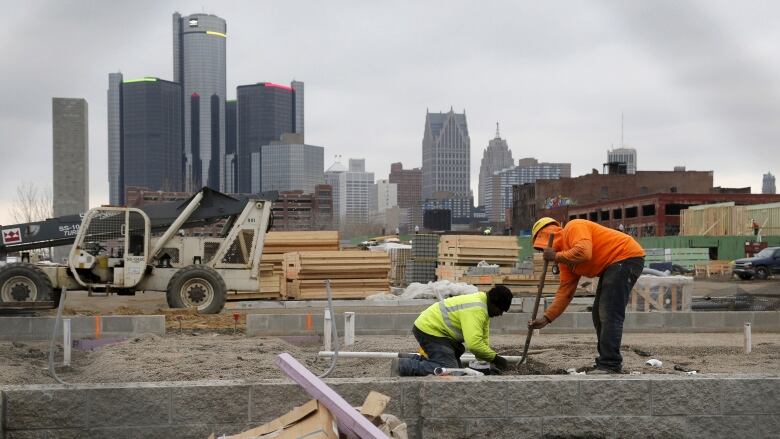U.S. employment rebounds in March, gaining 215,000 jobs
Steady hiring also contributes to average hourly pay, which rose 2.3% from year earlier to $25.43

U.S. employers notched another solid month of hiring in March by adding 215,000 jobs, driven by large gains in the construction, retail and health care industries.
Despite the jump, the U.S. Labor Department said Friday that the unemployment rate ticked up to 5 per cent from 4.9 per cent. But that increase includes some good news: more Americans came off the sidelines to look for work, though not all found jobs.
The figures suggest that employers remain confident enough in their business prospects to add staff, even as overall growth has slowed since last winter. Many analysts estimate that the economy grew at a 1 per cent annual rate or below in the first quarter. Continuing job gains indicate that employers may see the slowdown as temporary.
Growing paycheques
Steady hiring is also contributing to higher average hourly pay, which rose a modest 2.3 per cent from a year earlier to $25.43. That figure has increased since the early years of the recovery, but is below a peak of 2.6 per cent reached in December.
Sluggish wage growth has been a weak spot in the economy and a source of frustration for many workers since the Great Recession ended in 2009. Paycheques typically grow at a 3.5 per cent pace in a strong economy.
Construction firms added 37,000 jobs, likely aided by warmer weather. That helped offset another month of job losses in manufacturing, which has been hit by slower growth overseas, and mining, which includes the oil and gas drilling sector. Low oil prices have cost that industry 185,000 since September 2014.
More jobs can help fuel consumer spending, which is a critical source of growth this year. Other potential drivers of the economy, such as exports and business investment, have weakened.
Saving more
Consumer spending has faltered since last winter after healthy gains in 2015. Spending ticked up just 0.1 per cent in February for the third month in a row. That tepid trend caused many economists to slash their growth forecasts.
Americans appear to be pocketing much of their savings from lower gas prices rather than spending them. The savings rate rose to 5.4 per cent in February, the highest in a year.
Other economic data has been unusually mixed. Several reports suggest that manufacturers may be stabilizing after a difficult 2015, when weak overseas growth and the strong dollar hurt production.
Americans have pulled back a bit from home-buying. Sales of existing homes fell a sharp 7.1 per cent in February, held back by a lack of available supply that has pushed up prices.












_(720p).jpg)


 OFFICIAL HD MUSIC VIDEO.jpg)
.jpg)



























































































